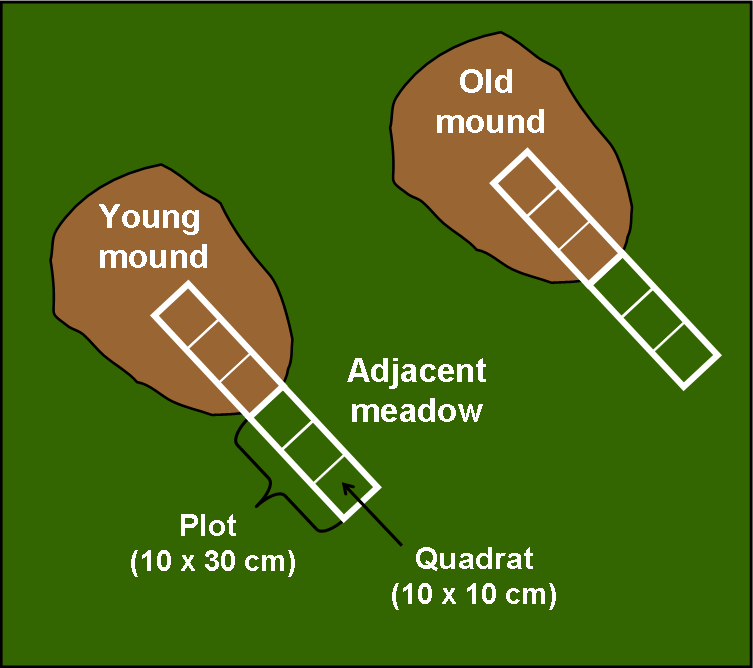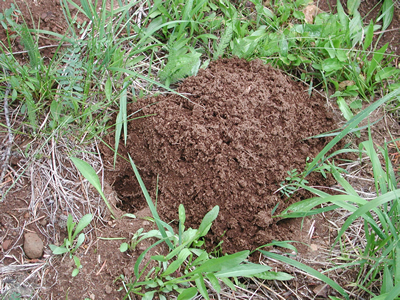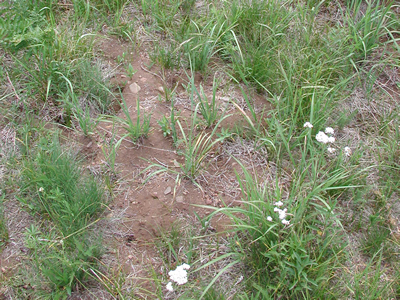We examined patterns of succession and community
heterogeneity associated with mound formation and aging. We asked
the following questions:
- How do plant cover and species diversity change as mounds undergo
succession?
- Does gopher activity shift the relative abundance of grasses vs. forbs? Does this relationship change as mounds undergo succession?
- Are communities of species on mounds more heterogeneous (variable)
in composition than those in adjacent meadows? Does this variability
decline as mounds succeed to meadow?
- Do mounds provide germination sites for species that are absent
from, or uncommon in, undisturbed meadow?
Methods
| Sampling
design |
 |
| Plots
consisting of three quadrats were used to sample vegetation
on gopher mounds and in adjacent meadow. |
|
Sampling. Three
open meadows (1-8 ha) were selected for sampling in Jul 2004. 74 mounds were chosen to represent two age classes: young and old
(photos, far right). (Fresh mounds were not sampled because they did
not have plant cover.)
Vegetation
was sampled using plots (10 x 30 cm) located fully on mounds or
in adjacent meadow (figure, right). Within each plot, we recorded
the presence of all species and estimated total cover of forbs and
graminoids in each of three quadrats (10 x 10 cm).
Analyses. For each
age class (young mounds, old mounds, and adjacent meadow), we compared the following community measures:
- Cover. Total, graminoids (grasses and sedges),
and forbs
- Richness. Mean number of species per quadrat (10 x 10 cm) and per plot (10 x 30 cm)
- Heterogeneity. Species heterogeneity at two spatial scales: (a) within plots
(among quadrats) and (b) among plots. Heterogeneity was measured
by Sorensen’s index which ranges from 0 (quadrats or plots
share all species in common) to 1 (no species in common).
| Jones,
C. C., C. B. Halpern, and J. Niederer. 2008. Plant
succession on gopher mounds in western Cascade meadows: consequences
for species diversity and heterogeneity. American Midland
Naturalist 159:275-286. Request reprint |
 |
Age
classes
of gopher mounds |
| Fresh
mound |
 |
| Formed
in the current growing season with no plant cover.
(Fresh mounds not sampled.) |
|
| Young
mound |
_15%20Jul%202007.jpg) |
| Formed
1-2 yr before sampling, showing signs of compaction
and weathering, but the surface elevated above surrounding
meadow. |
|
| Old
mound |
 |
| Formed
at least 3 yr before sampling, showing pronounced compaction and weathering, with the surface only slightly, if at all, elevated. |
|
|
|
![]()
![]()
![]()
![]()
_13%20Ju%202009_sm.jpg)


_15%20Jul%202007.jpg)
